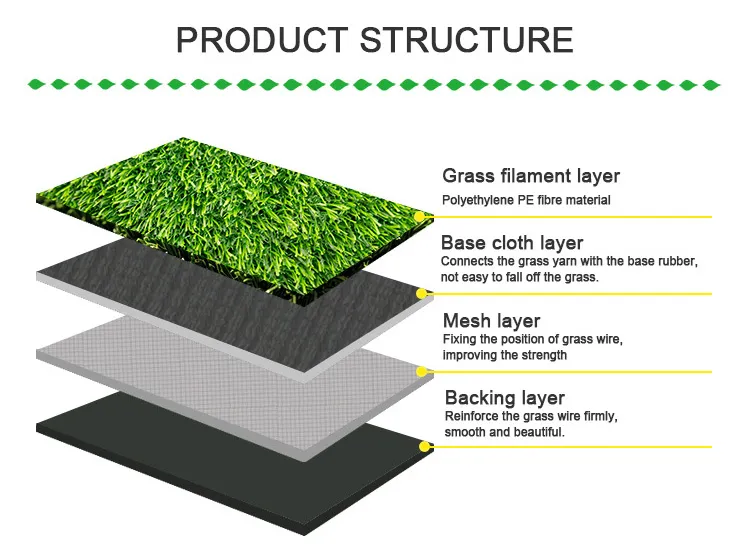
- Afrikaans
- Arabic
- Belarusian
- Bengali
- Czech
- Danish
- Dutch
- English
- Esperanto
- Estonian
- Finnish
- French
- German
- Greek
- Hindi
- Hungarian
- Icelandic
- Indonesian
- irish
- Italian
- Japanese
- kazakh
- Rwandese
- Korean
- Kyrgyz
- Lao
- Latin
- Latvian
- Malay
- Mongolian
- Myanmar
- Norwegian
- Persian
- Polish
- Portuguese
- Romanian
- Russian
- Serbian
- Spanish
- Swedish
- Tagalog
- Tajik
- Thai
- Turkish
- Turkmen
- Ukrainian
- Urdu
- Uighur
- Uzbek
- Vietnamese
football stadium turf
Oct . 10, 2024 07:16 Back to list
The Evolution of Football Stadium Turf A Blending of Tradition and Technology
Football is not just a game; it is a passion that brings communities, fans, and players together. Central to the experience of football is the stadium itself, where emotions run high and moments of glory are etched into history. At the heart of this exhilarating environment lies the turf—the very ground where players showcase their skills, and fans witness unforgettable moments. The evolution of football stadium turf reflects both the rich traditions of the sport and the technological advancements that have transformed how the game is played and experienced.
Traditionally, natural grass has been the preferred choice for football stadiums. Renowned for its aesthetic appeal and player-friendly characteristics, natural turf provides a unique playing surface that many players favor. Over the decades, iconic stadiums around the world, from Wembley Stadium in London to Maracanã Stadium in Rio de Janeiro, have featured beautifully manicured grass fields that evoke nostalgia and honor the game's storied past. Players often speak of the tactile connection they feel when playing on grass—the way it responds to their cleats and allows for fluid movement. Furthermore, the sight of lush, green grass under stadium lights enhances the visual spectacle, generating an atmosphere that is difficult to replicate.
However, maintaining natural grass in large stadiums poses significant challenges. Weather conditions, heavy foot traffic, and the high frequency of games can lead to damaged turf. Groundskeepers work tirelessly, employing various techniques to ensure that the pitch is playable week after week. Nonetheless, the necessity for a more durable and consistent playing surface led to the advent of synthetic turf, which has gained popularity in recent years.
football stadium turf

Synthetic turf, also known as artificial grass, was first introduced in the 1960s, but it has since undergone substantial evolution to become a worthy alternative to natural grass. Modern synthetic pitches now closely mimic the look and feel of real grass, with advanced polymers and infill systems that enhance performance and safety. These surfaces provide consistent playing conditions regardless of the weather, enabling matches to proceed without the risk of a muddy or damaged pitch. Moreover, synthetic turf requires less maintenance, freeing up resources for clubs to focus on other areas of their operations.
A significant consideration in the discussion surrounding turf is player welfare. The introduction of synthetic surfaces has sparked debates over player safety, particularly concerning the higher risk of certain injuries and the effect on players' physical performance. Research continues to evolve in this area, as stakeholders seek the ideal balance between the practicality of synthetic turf and the traditional values upheld by players and fans alike.
In addition to performance and maintenance concerns, the environmental impact of turf surfaces also plays a role in the evolution of football stadiums. As sustainability takes center stage in various industries, stadium developers are increasingly considering eco-friendly options. Initiatives, such as hybrid grass systems that combine natural and synthetic elements, aim to provide the best of both worlds while reducing environmental footprints.
As we look to the future of football stadium turf, it is clear that the conversation surrounding this topic will continue to evolve. The blend of tradition and technology offers exciting possibilities for player experience and fan enjoyment. Whether it’s the nostalgic allure of natural grass or the practical advantages of synthetic surfaces, the turf beneath our feet will forever remain a vital aspect of the beautiful game. As clubs adopt innovations while honoring the sport’s history, the ongoing dialogue about football stadium turf will be a testament to the game's resilience and adaptability in an ever-changing world.
-
The Benefits of Artificial Turf for Indoors
NewsJul.15,2025
-
How Artificial Grass Suppliers Ensure Quality Products
NewsJul.15,2025
-
Artificial Grass and Pets: A Space for Relaxation
NewsJul.08,2025
-
Balcony & Outdoor Decoration with Artificial Grass
NewsJul.08,2025
-
Best Indoor Artificial Grass for Home
NewsJul.07,2025
-
Best Pet Turf for Dogs: Safe & Durable Artificial Grass Options
NewsJul.07,2025
Products categories









